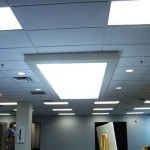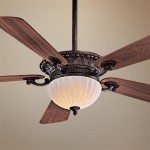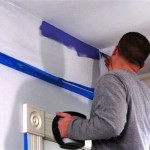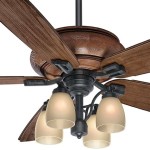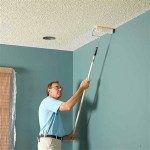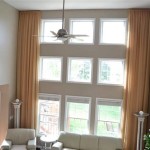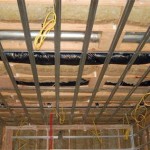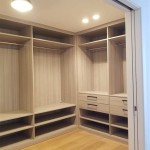Basement Ceiling Insulation R-Value: A Guide to Energy Efficiency
Basements are often overlooked when it comes to home energy efficiency, but insulating the ceiling can make a significant difference in comfort and energy savings. The R-value of insulation measures its ability to resist heat flow. A higher R-value means better insulation, keeping your home warmer in the winter and cooler in the summer. Understanding the importance of R-value for basement ceiling insulation is crucial for maximizing comfort and minimizing energy consumption.
Understanding R-Value
R-value stands for "resistance value" and quantifies the effectiveness of insulation in slowing down heat transfer. The higher the R-value, the better the insulation. For instance, a material with an R-value of 15 will resist heat flow twice as effectively as a material with an R-value of 7.5. It is important to note that R-value is a measure of insulation's resistance to heat flow, not its thickness. A thicker insulation material may not necessarily have a higher R-value.
Different types of insulation materials have varying R-values. Common insulation materials used for basement ceilings include fiberglass batts, blown-in cellulose, spray foam, and rigid foam boards. Fiberglass batts are readily available and offer good R-value per inch of thickness. Blown-in cellulose, made from recycled paper, is known for its high R-value and excellent sound absorption. Spray foam is a highly effective insulation that expands to fill gaps and crevices, providing a tight seal. Rigid foam boards, typically made from polyurethane or polystyrene, are durable and offer excellent thermal resistance.
Factors Affecting Basement Ceiling R-Value
Several factors influence the R-value required for your basement ceiling insulation. The climate you live in plays a significant role. Colder climates necessitate higher R-values to maintain warmth during the winter. Similarly, warmer climates require adequate insulation to prevent heat from entering the house during the summer. The type of insulation chosen also significantly impacts the overall R-value. Fiberglass batts offer a standard level of insulation, while spray foam provides a higher R-value per inch. Moreover, the thickness of the insulation directly affects its R-value. Thicker insulation typically has a higher R-value.
The construction of your basement ceiling is another critical factor. If there are any gaps or air leaks, the effectiveness of the insulation will be compromised. It is essential to ensure a tight seal to prevent air infiltration and maximize the benefits of the insulation. Additionally, the presence of an existing vapor barrier can influence the insulation's effectiveness. A vapor barrier helps prevent moisture from accumulating in the insulation, which can reduce its R-value and create a potential breeding ground for mold.
Recommended R-Values for Basement Ceiling Insulation
The recommended R-value for basement ceiling insulation varies depending on climate and other factors. However, most building codes specify a minimum R-value for insulation in residential buildings. In general, it is recommended to aim for an R-value of at least R-30 for basement ceilings. This value provides adequate thermal resistance to keep your basement comfortable throughout the year. Depending on your geographic location and desired level of energy efficiency, you may consider a higher R-value. For example, in extremely cold climates, an R-value of R-38 or even R-49 may be recommended for optimal thermal performance.
In addition to the overall R-value, it is essential to consider the specific insulation material and its installation method. When installing fiberglass batts, ensure a tight fit to avoid air gaps. For blown-in cellulose, ensure proper density for optimal effectiveness. Spray foam requires expert application to achieve a uniform and airtight seal. Rigid foam boards should be installed securely, ensuring proper joint sealing to minimize air leakage. By considering these factors, you can maximize the effectiveness of your basement ceiling insulation.

Recommended Insulation Levels For Optimum R Value

All About Insulation R Values The Home

Insulation R Value What Is It Knauf

New York Recommended Home Insulation R Values Zone 4

Envelope Pa Energy Code

Insulation Levels For Cold Hot And Moderate Climates

All About Insulation R Values The Home

How Much Insulation Does My Home Need R Value

Envelope Pa Energy Code

How Much Insulation Does Your Home Need Guide

